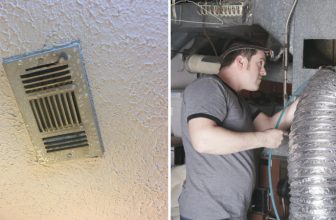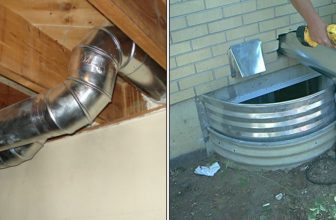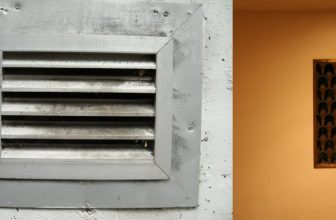How to Get More Air Flow From Vents
Are you looking to increase air flow from your vents? Here are some helpful ways how to get more air flow from vents.
Ventilation is an important part of every room in the house, especially in the winter months. But many homeowners don’t realize just how much airflow can be increased simply by making a few small changes to their venting system. With some easy DIY techniques and an understanding of how air movement works within a home, you can instantly increase airflow from your vents—and with almost no additional expense!
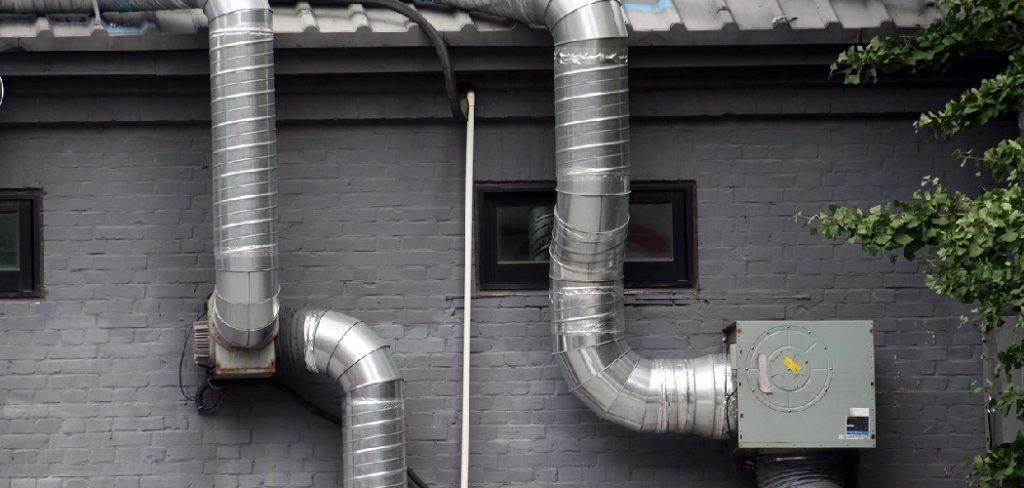
You’ll also learn creative ways to use your vents that can transform them into attractive design elements that cover up any unsightly wall parts or serve as decoration for other items around the home.
Keep reading to find out how you can get more airflow from your vents!
What Will You Need?
Before you start, make sure that you have all the necessary supplies. These are the followings:
- A vacuum cleaner
- Screwdriver
- Rag or brush
- A ladder (if needed)
Once you have gathered the necessary supplies, you are ready to begin.
10 Steps on How to Get More Air Flow From Vents
Step 1: Vacuum Up Any Dust or Debris
The first thing you want to do is vacuum up any dust, dirt, or debris that may be blocking the vents. You can use a vacuum cleaner with an extended hose and attachments specifically designed for getting into tight spots. Make sure to get in between each of the louvers on the vent, as this is where dust usually builds up.
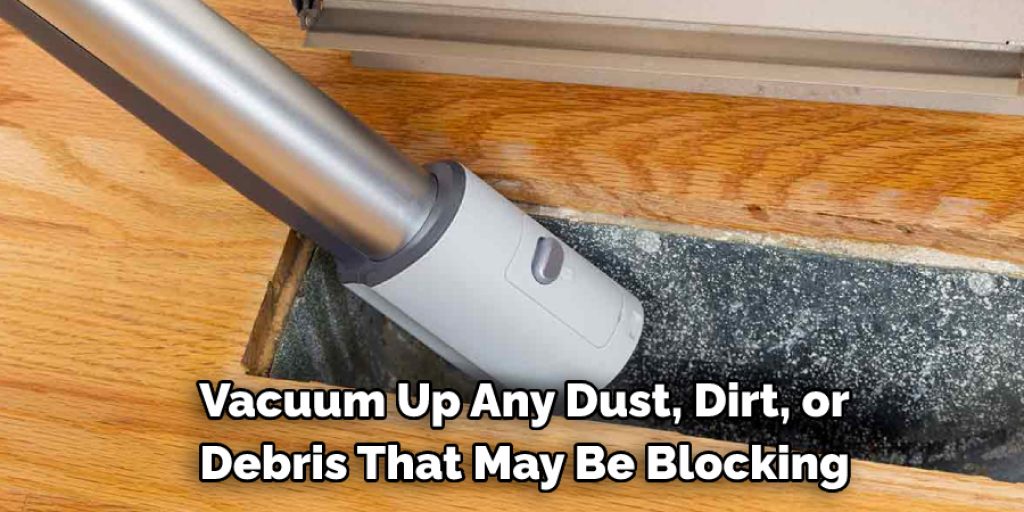
Step 2: Check For Blockages
Once you’re done vacuuming, check for blockages in your ducts. Many times, dust and debris will build up in the ducts, which can restrict airflow from your vents. If you have access to them, you can use a flashlight and a screwdriver to remove any obstructions found inside your ducts manually.
Step 3: Clean the Vents
Using a rag or brush, clean off all of the dirt and dust from your vents. Make sure to get into each of the louvers and remove any cobwebs that may be blocking airflow. If you have metal vents, use a metal polish to ensure that they are shiny and clean.
Step 4: Check For Leaks
Check for any leaks in the ducts or around the outside of your vents by using a ladder if necessary. Any gaps or tears can be sealed up with caulk or silicone sealant, depending on their size. This will help improve airflow from your vents as well as reduce energy costs.
Step 5: Replace Air Filters
If your vents have air filters, make sure to replace them on a regular basis. This will help ensure that the air flowing through your vents is clean and healthy. Don’t forget to check the filter often for blockages, too.
Step 6: Adjust Vent Settings
Many newer homes have adjustable vents that can be adjusted to increase airflow from your vents. Take some time to adjust the settings so you can get more airflow from each vent without compromising other areas of the house. If you’re unsure how to do this, consult your owner’s manual or contact a professional.
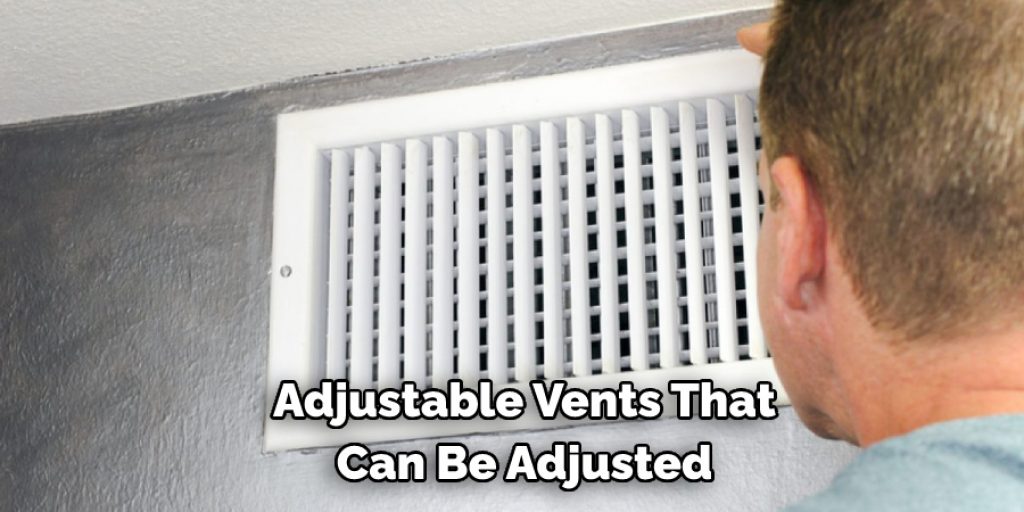
Step 7: Add Vents To High Traffic Areas
If you find that certain rooms in your house are lacking in adequate ventilation, consider adding additional vents or outlets in these areas. This will help improve the overall flow of air throughout your home and provide better comfort for all occupants. If you need help, consult a professional.
Step 8: Install Fans
To further increase airflow, consider installing small fans in strategic locations. This will help circulate the air more effectively and ensure that it is evenly distributed throughout the room. Try to place the fans near vents or outlets to maximize their effectiveness.
Step 9: Add Insulation To Ducts
If your ducts are not insulated properly, then you won’t be able to get as much airflow from your vents. Consider adding insulation around the ducts to prevent any warm or cold air from escaping. This will help ensure that all the air stays inside and that you get the maximum benefit from your vents.
Step 10: Make It A Design Element
Finally, don’t forget that vents can also serve as an attractive design element in your home. Consider covering up unsightly wall parts or using vents as decoration for other items around the house. This will help make sure that your vents both look good and perform well at the same time. Remember, with a little effort, you can get more airflow from your vents and improve the comfort of your home.
By following these steps, you will be able to get more airflow from your vents and enjoy better air circulation in your home. Make sure to regularly check on your vents and clean them when necessary to ensure maximum performance. With a little bit of effort, you can easily improve the ventilation in any room!
5 Additional Tips and Tricks
1. Make sure that your vents are unblocked and unobstructed. Keeping furniture, curtains, or any other items away from the vents can help improve airflow.
2. Check the temperature settings on your thermostat. Keeping it at a lower temperature will cause the system to run longer and create more airflow throughout your home or business.
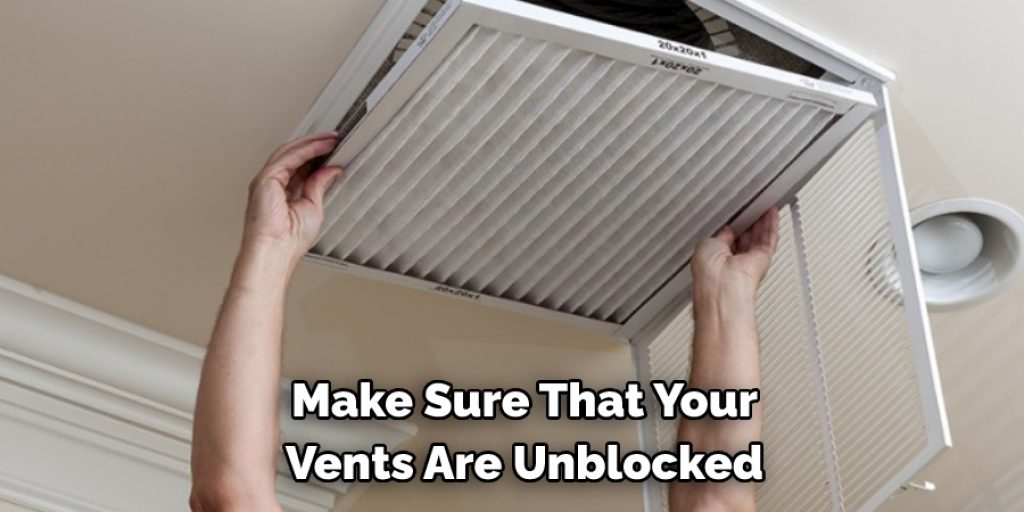
3. Keep your filters clean and replace them regularly, as dirty filters restrict airflow and decrease efficiency.
4. If you have adjustable vents, open them up fully to maximize airflow in each room of the house or office space.
5. Add extra insulation to exterior walls, attics, and crawl spaces where ducts are located to ensure optimal cooling system performance when pumping out cool air.
With these additional tips and tricks, you can increase your vents’ airflow and ensure your home or office space is being cooled properly.
5 Things You Should Avoid
1. Don’t Cover the Vents: Covering the vents can block airflow and restrict the air from circulating throughout your home or office.
2. Don’t Run Too Many Appliances at Once: Running multiple large appliances, such as a dryer or dishwasher, simultaneously can reduce the amount of cool air that is pushed out of your vents.
3. Don’t Put Furniture in Front of the Vents: Furniture-blocking vents will decrease airflow and could even lead to an overheating situation if not monitored closely.
4. Don’t Turn Off Return-air Grilles: If you want warm air to be cycled out of your system, make sure you don’t turn off any return-air grilles in your space.
5. Don’t Forget About Maintenance: Regularly scheduling professional tune-ups and inspections for your HVAC system is the best way to ensure optimal performance.
By avoiding these common mistakes, you can ensure you get the most air flow out of your vents. Making sure that your cooling system is performing at its peak efficiency will help keep your home or business comfortable and reduce energy costs over time.
Why is There Hardly Any Air Coming Out of Vents?
There can be a number of reasons why there is hardly any air coming out of your vents. These include:
1. Blocked Vents or Ducts: If the vents and ducts are blocked, this will restrict the airflow from circulating properly.
2. Dirty filters: Dirty filters can restrict airflow and reduce efficiency over time.

3. Incorrect Thermostat Settings: Setting the temperature too low or too high on your thermostat could cause the system to run inefficiently, resulting in less air coming out of your vents.
4. Faulty Motor or Fan Blades: If a motor is worn down or the fan blades are damaged, this can decrease airflow as well.
5. Leaky Ducts: Leaking ducts can cause air to escape before it ever reaches the vents.
If you’re having trouble getting more air flow out of your vents, it’s important to take steps to diagnose and fix the issue sooner rather than later. This could include cleaning filters, checking thermostat settings, or scheduling a professional inspection of your HVAC system.
Taking these steps can help ensure your cooling system is running efficiently and that you’re getting the most out of it.
Conclusion
Getting optimum air flow from your vents can bring huge benefits and comfort to your home. From making sure your furnace is running at the proper temperatures and pressures to ensuring that your grills are not clogged with dust and debris, steps to regulate air flow should be taken areas of your home separately. Utilizing at least two different methods for controlling airflow will help balance temperature levels in your house’s rooms, making it more pleasant year-round.
Furthermore, taking proactive steps such as regular filter changes and cleaning or replacing the grills can help maximize air flow while reducing energy costs. Take some time now to increase air flow and enjoy a comfortable living space, regardless of the weather outside!
Hopefully, the article on how to get more air flow from vents was helpful. Thanks for reading!

